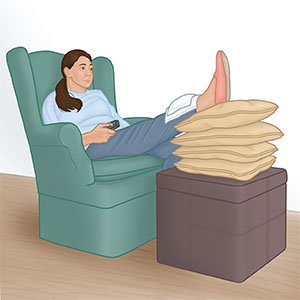Steroid Joint Injection
Medically reviewed by Drugs.com. Last updated on Aug 4, 2025.
A steroid joint injection is a procedure to inject steroid medicine into a joint. Steroid medicine decreases pain and inflammation. The injection may also contain an anesthetic (numbing medicine) to decrease pain. It may be done to treat conditions such as arthritis, gout, or carpal tunnel syndrome. The injections may be given in your knee, ankle, shoulder, elbow, or wrist. Injections may also be given in your hip, toe, thumb, or finger.
DISCHARGE INSTRUCTIONS:
Contact your healthcare provider if:
- You have fever or chills.
- You have redness or swelling at the injection site.
- You have more pain than usual in your joint for more than 72 hours.
- You have questions or concerns about your condition or care.
Related medications
Medicines:
- Pain medicine may be given. Ask how to take this medicine safely.
- Take your medicine as directed. Contact your healthcare provider if you think your medicine is not helping or if you have side effects. Tell your provider if you are allergic to any medicine. Keep a list of the medicines, vitamins, and herbs you take. Include the amounts, and when and why you take them. Bring the list or the pill bottles to follow-up visits. Carry your medicine list with you in case of an emergency.
Self-care:
- Leave the bandage on for 8 to 12 hours. Care for your wound as directed.
- Rest the area as directed. You may need to decrease weight on certain joints, such as the knee, for a period of time. Ask when you can return to your daily activities.
- Elevate your limb where the steroid injection was given. Elevate the limb above the level of your heart as often as you can. This will help decrease swelling and pain. Prop your limb on pillows or blankets to keep it elevated comfortably.

- Apply ice on your joint for 15 to 20 minutes every hour or as directed. Use an ice pack, or put crushed ice in a plastic bag. Cover it with a towel. Ice helps prevent tissue damage and decreases swelling and pain.
© Copyright Merative 2025 Information is for End User's use only and may not be sold, redistributed or otherwise used for commercial purposes.
The above information is an educational aid only. It is not intended as medical advice for individual conditions or treatments. Talk to your doctor, nurse or pharmacist before following any medical regimen to see if it is safe and effective for you.
Further information
Always consult your healthcare provider to ensure the information displayed on this page applies to your personal circumstances.
